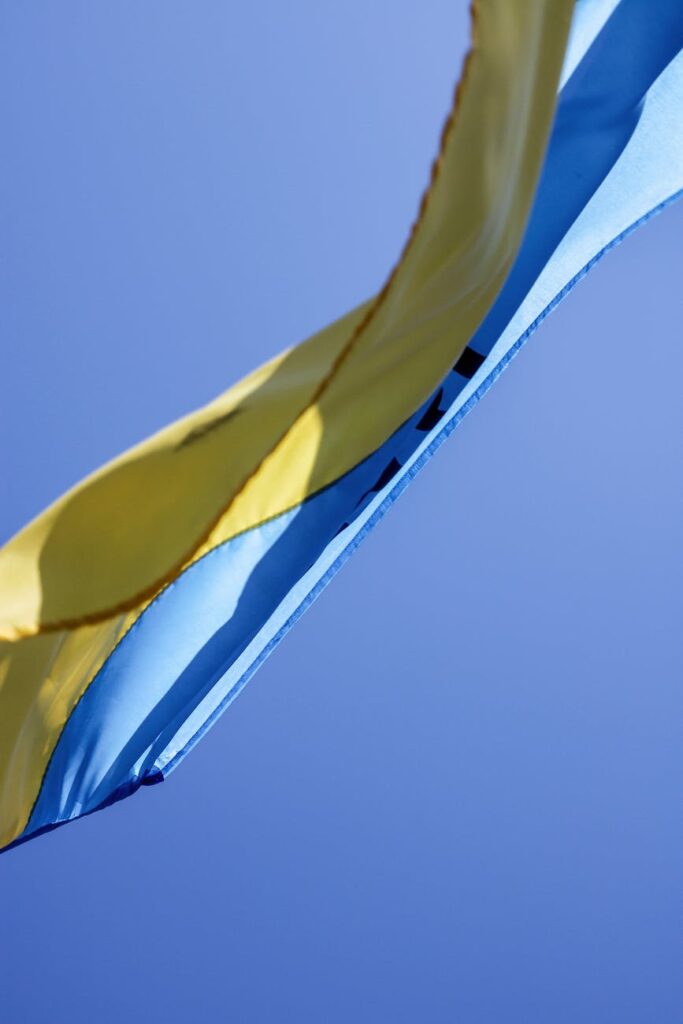
By Bradley Devlin, The American Conservative, 2/16/23
“It is obvious that American business can become the locomotive that will once again push forward global economic growth,” Ukrainian President Volodymyr Zelensky said in a late January address to the Boca Raton Chamber of Commerce, boasting that BlackRock, JP Morgan, and Goldman Sachs, and others “have already become part of our Ukrainian way.”
Zelensky did not elaborate on what the “Ukrainian way” is. Maybe the “Ukrainian way” is one of rampant corruption—two of the presidents before Zelensky have either been charged with or convicted of high treason and numerous government officials have been fired or forced to resign for improper use of wartime funds. Whatever it may be, JP Morgan wants more of it.
On Monday, news broke that JP Morgan and Zelensky had signed a memorandum of understanding stipulating that JP Morgan would assist Ukraine in its reconstruction. A release of the meeting posted on the President of Ukraine’s website said, “The parties discussed the creation of a platform for attracting private capital to rebuild Ukraine and promising directions of large investment projects in Ukraine, in particular in the sectors of green energy, IT, and agricultural technologies.”
JP Morgan executives spent a few days in Ukraine last week. They met with Zelensky and other government ministers and officials in Ukraine, and visited a number of Ukrainian cities to assess the damage sustained by the Ukrainian economy. After making some initial assessments, JP Morgan executives discussed at a meeting with Zelensky the creation of a fund endowed with between $20 billion to $30 billion of private capital to help fund Ukraine’s reconstruction, according to Fox Business. Other ideas reportedly floated in the meeting was establishing a bank run by Wall Street giants to make investments in various kinds of vital infrastructure, such as roads, bridges, and oil refineries.
During the meeting, Zelensky told the JP Morgan executives, “I understand very well that doing business and investing cannot be beneficial to only one party. We want you to invest in Ukraine and earn money.” To which JP Morgan Chase’s chairman and CEO, Jamie Dimon, replied, “We are proud of our long-standing support of Ukraine and committed to doing our part to lift up the country and its people. The full resources of JPMorgan Chase are available to Ukraine as it charts its post-conflict path to growth.”
Towards the end of the JP Morgan executives’ time in Ukraine, they gifted Zelensky with a New England Patriots jersey with the number 91 on it for the year Ukraine gained its independence from the collapse of the Soviet Union.
Dimon has called the current war in Ukraine “an inflection point for the Western world for a hundred years.”
“Do we get our act together to help win this war, help the Ukrainians, help rebuild Ukraine?” Dimon said previously.
While JP Morgan may see itself as one of Ukraine’s chief financial advisors alongside other U.S.-based companies such as BlackRock, which has also entered into a memorandum of agreement with the Ukrainian government on marshaling reconstruction funding, JP Morgan also has current market positions that suggest the finance giant is set to profit off of the war’s continuation. For example, JPMorgan Investment Management held more than $2.5 billion in Raytheon stock, and over $1.3 billion worth of both Northrop Grumman and General Dynamics stock as of February 15.
This doesn’t mean that JP Morgan is necessarily doing anything illegal by working with the Ukrainian government while having large holdings in U.S. defense contractors. Rather, it serves as an indictment of the incentive structures at play in our over-financialized economy. JP Morgan, BlackRock, and other financial giants can profit from prolonging the war via continued transfer of weapons and equipment to Ukraine by taking out large positions in defense contractors. At the very same time, these same corporations are free to swoop in and compound their profits by investing in the reconstruction of Ukraine, a project that only seems to become larger and potentially more profitable thanks to the conflict’s protraction.
As Saint Thomas Aquinas reminds us, the goal of political life is peace. But why would Ukraine ever be open to negotiating a peace with Russia when the Biden administration—though its doctrinaire support of Ukraine for “as long as it takes”—and powerful Wall Street players are so heavily invested in a Ukrainian victory that they pretend it is a fait accompli?
JP Morgan may consider itself Ukraine’s angel investor. Maybe it’s the angel of death.


